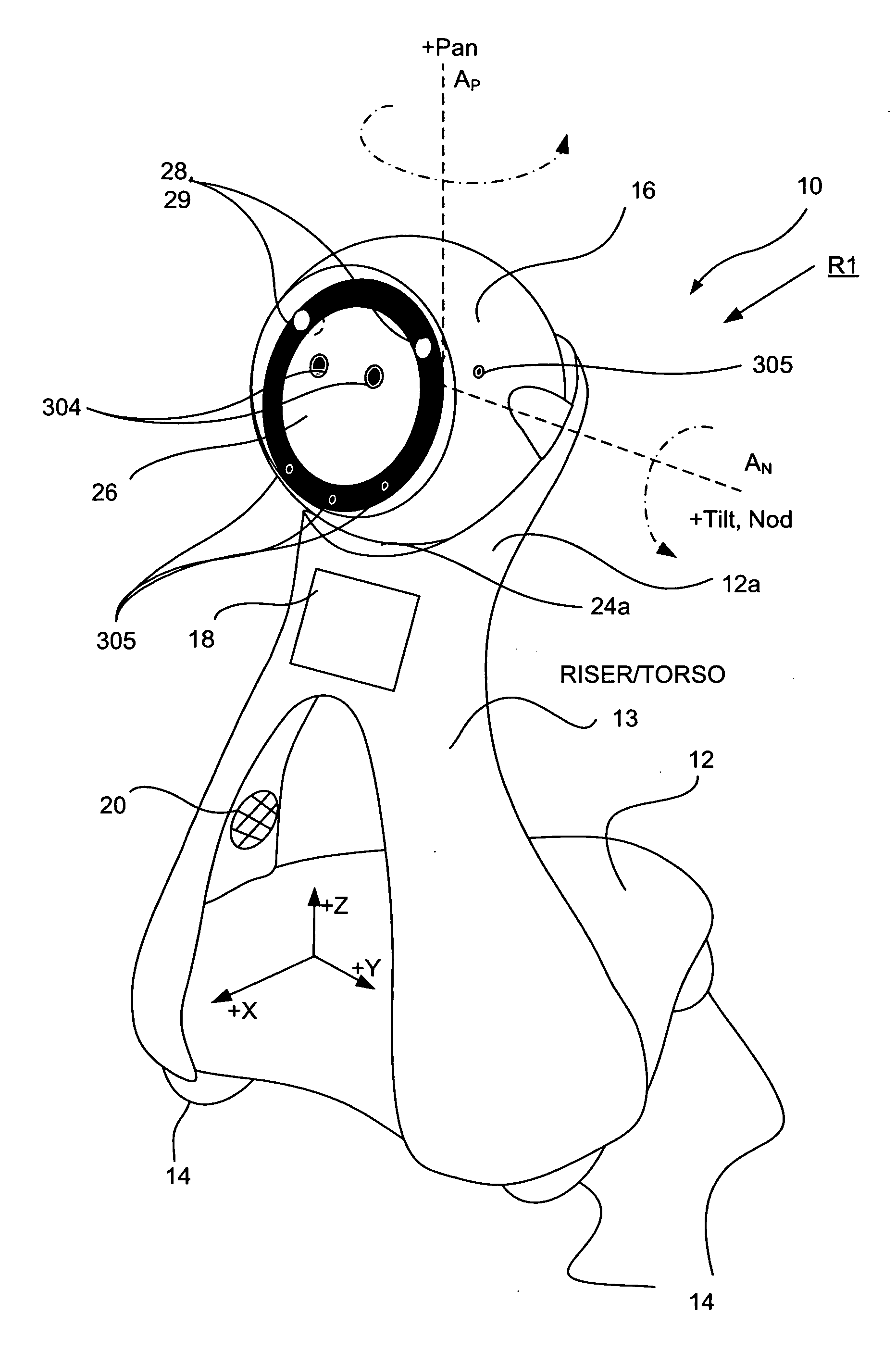Companion robot for personal interaction
a companion robot and personal technology, applied in the field of autonomous mobile robots, can solve the problems that the robot platform does not consider the actual home environment, personal, privacy and personal dignity, suitable for use in private homes, etc., and achieve the effects of improving a presence scor
- Summary
- Abstract
- Description
- Claims
- Application Information
AI Technical Summary
Benefits of technology
Problems solved by technology
Method used
Image
Examples
Embodiment Construction
[0102] One embodiment of an autonomous mobile robot 10 is shown in FIGS. 1A and 1B. The robot 10 has a body 12, one or more wheels 14, and a head 16. Certain components of the robot 10 (e.g., the body 12, wheels 14, and head 16) may each be configured to be readily mounted and demounted from the others via compatible quick-mount and / or electrical contact point arrangements, permitting different versions of each to be used in a compatible manner. A number of peripheral devices may be mounted on the robot 10, either on the body 12, head 16, or elsewhere. The depicted embodiment includes a touch screen 18 for allowing a user to interact with the robot 10, answer questions posed by the robot 10, or give the robot 10 commands. A speaker 20 or other sound-generating device is located on the robot 10. In addition, as shown in FIG. 1B, the robot 10 may utilize a number of sensors 22 mounted on virtually any location on the robot 10, for sensing various environmental conditions. For example,...
PUM
 Login to View More
Login to View More Abstract
Description
Claims
Application Information
 Login to View More
Login to View More - R&D
- Intellectual Property
- Life Sciences
- Materials
- Tech Scout
- Unparalleled Data Quality
- Higher Quality Content
- 60% Fewer Hallucinations
Browse by: Latest US Patents, China's latest patents, Technical Efficacy Thesaurus, Application Domain, Technology Topic, Popular Technical Reports.
© 2025 PatSnap. All rights reserved.Legal|Privacy policy|Modern Slavery Act Transparency Statement|Sitemap|About US| Contact US: help@patsnap.com



